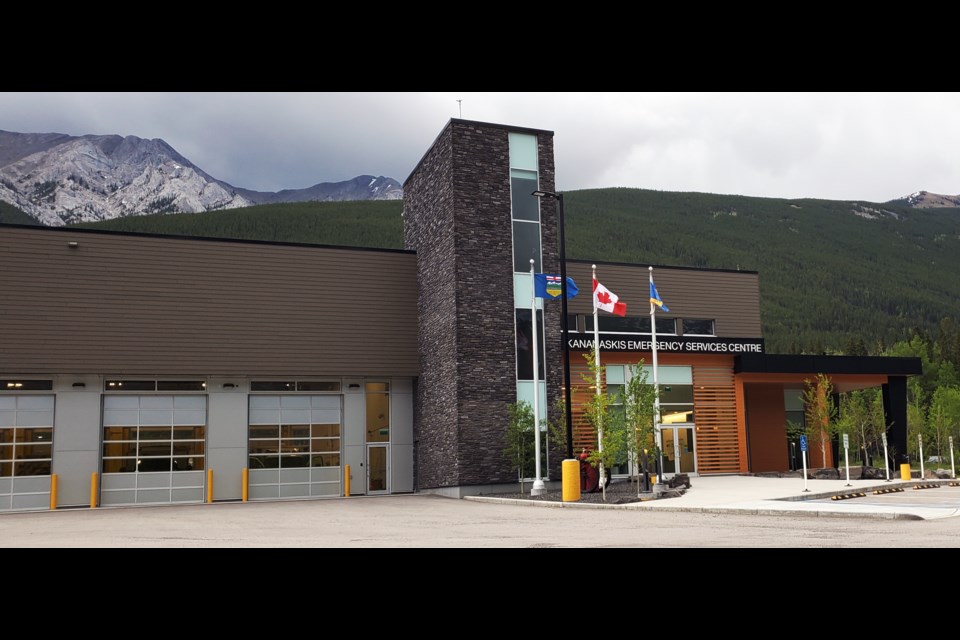KANANASKIS COUNTRY – Kananaskis Emergency Services Centre fire crews and equipment deployed to help put out wildfires across Alberta are also likely to help pay for future fire response.
It cost Kananaskis Improvement District $357,286 to respond to fires outside Kananaskis and the Bow Valley in Zama City, Rainbow Lake, Peace River, Yellowhead County, Grande Prairie and Garden River during Alberta’s 2023 wildfire season. Revenue – primarily from lending apparatus at approved wildland urban interface (WUI) rates – totalled $577,453, leaving KID with a surplus of $220,167.
“If we continue to do this in future and what we’re hearing is it’s going to be another dry, hot summer, spring and fall … we’re potentially going to have the opportunity to do this again,” said KID Chair Melanie Gnyp, who suggested the surplus could be put into capital reserves to pay for fire equipment replacement, training and related response.
Council suggested KID look at implementing a policy where at least a portion of any revenue earned through WUI response is put into reserves for future fire response.
“I think some kind of a formula, with consideration to that among other things would be great,” said Coun. Darren Robinson.
KID municipal advisor Julia Millen presented the information on KID’s WUI response on behalf of KESC’s fire chief Gary Robertson, who was unable to attend the council meeting.
Millen said in discussion with the fire chief it was suggested funds be set aside for capital or invested into other WUI equipment to offset required tax revenue down the road.
She noted some of the costs of wear and tear in deployment are recoverable, but not all, so funding for future repairs could be another smart investment.
Repairs to a tender pump damaged due to debris in the water during deployment in Garden River represented $69,154 of recoverable costs, but a $20,000 fuel system repair for KESC current bushbuggy was not, as it’s not associated with deployment but aging of the apparatus, a staff reported noted.
“It certainly is an idea and it can reduce taxation dollars and free up dollars for other things,” Millen said, adding WUI rates are reviewed annually and subject to change in 2024.
Six invoices were generated by KESC for 2023 deployments, which are tied to ticket numbers issued by the Alberta Emergency Management Agency when apparatus and crews were formally requested.
Fires categorized as WUI fall outside the Forest Protection Area of Alberta. Guidelines for WUI cover response procedures for municipal firefighters, private contractors, and Alberta government employees, including reimbursement processes and minimum standards for personnel, apparatus, training and experience.
Wages and benefits for full-time firefighters were paid as per the Alberta Union of Public Employees Collective Bargaining Agreement. The regularl hourly rate in the agreement was lower than WUI guidelines, however, and three officers received a top-up to reach parity with WUI rates, a staff report noted.
“Wages for full-time staff were recovered up to the WUI guideline rates for all hours deployed; the difference was covered by revenue,” it stated.
Faerden applauded local fire crews’ efforts responding to what was the province’s worst wildlfire season on record.
“I see us as a very interesting emergency services centre having a need for multiple staff at peaks times, and us going to help other communities opens us up to the help we will need if something happens here,” he said.
The Firefighter Residency Apprenticeship Program (FRAP), introduced by KESC in 2017 to recruit more firefighters in Kananaskis, has been a major driver behind employing people interested in entering the fire services field.
National Fire Protection Association training is provided at no cost and recruits are paid for time training, on call and during duty shifts over the 20-month program.
As a requirement for acceptance into the program, applications are forwarded to partners at the Pomeroy Kananaskis Mountain Lodge and Kananaskis Nordic Spa to obtain full-time employment and residency within Kananaskis for the duration of the program. Staff accommodations are provided to recruits.
“I really want to acknowledge the Pomeroy letting so many of the FRAP young men and women to head up north to work on these wildfires,” said Faerden. “That was peak season for everyone at the same time in the summer and they would have been down a good number of staff so it’s not a small commitment to have offered that.
“I think it’s something KID will continue to reap the benefits from as we now have more trained and capable people to help us when wildfire comes our way.”
The Local Journalism Initiative is funded by the Government of Canada. The position covers Îyârhe (Stoney) Nakoda First Nation and Kananaskis Country.




